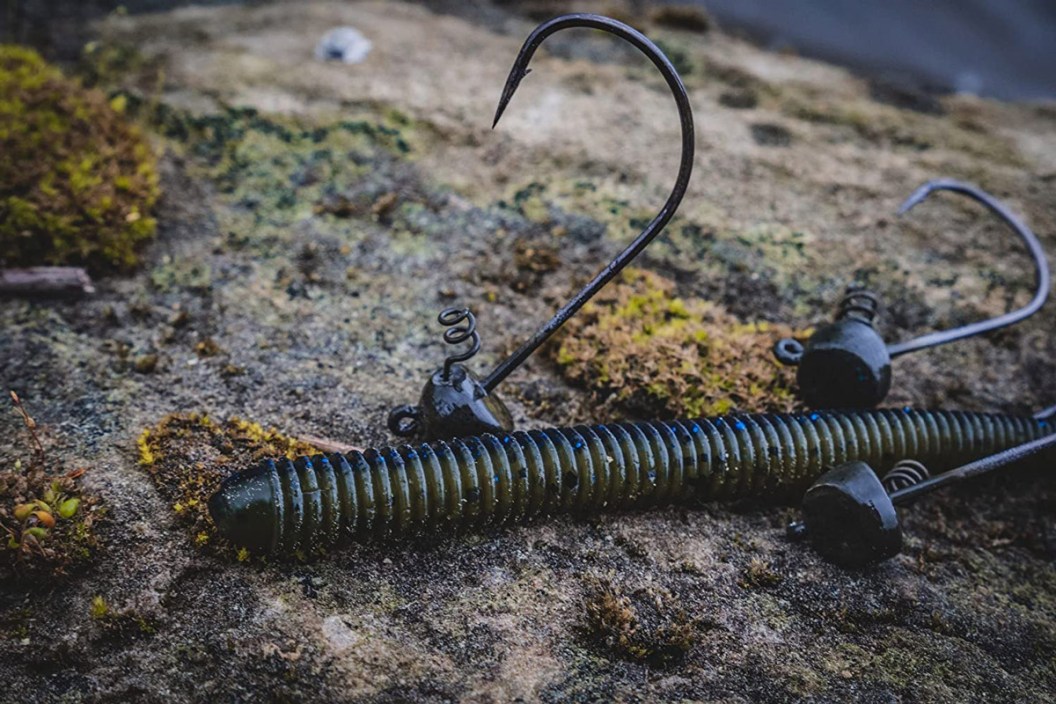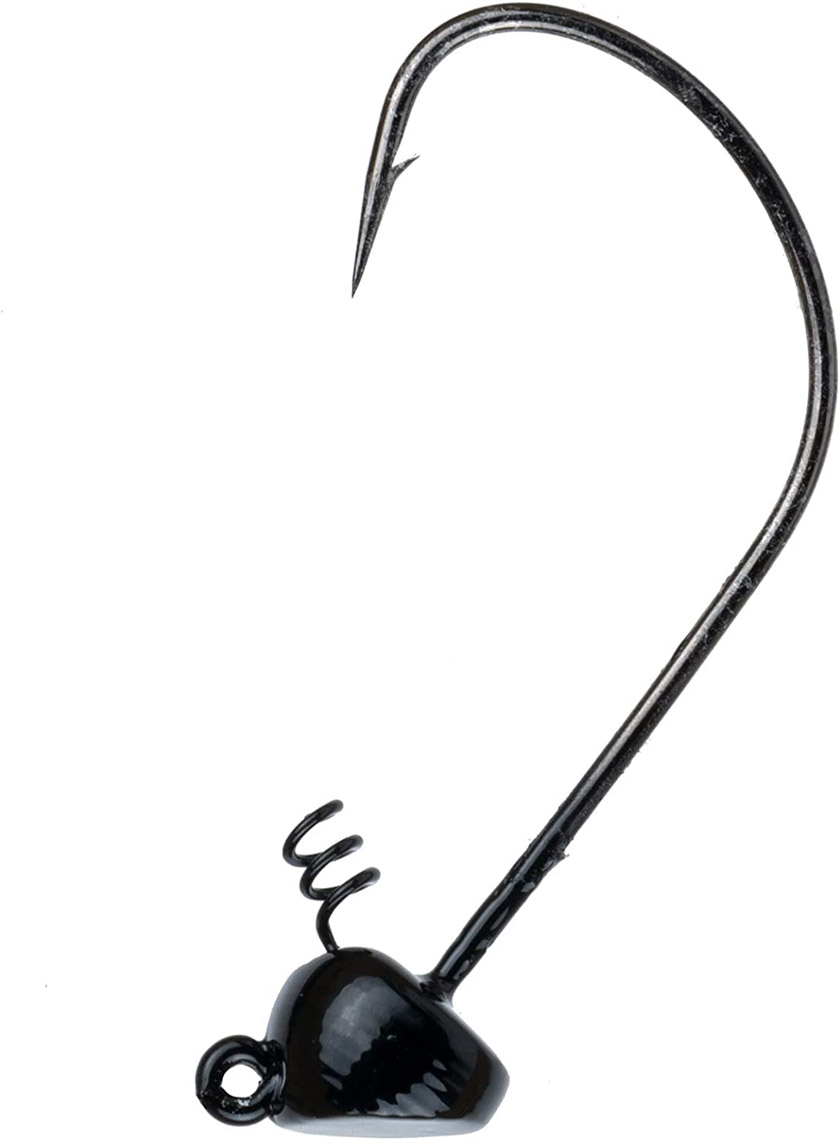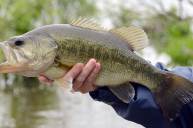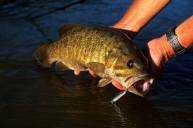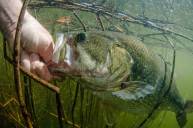It's a subtle voice of reason when the boisterous, power-fishing approach fizzles; a user-friendly technique that'll go just about anywhere and tempt bass in a range of moods from aggressive to bad hair day. We're talking shaky heads—a real go-to, back-up, bail-you-out rig that flat-out delivers.
Designed to hold a worm or other plastic bait in a semi-vertical posture, this jig style requires only a well-placed cast and minimal rod tip work. Pitched around a wide range of natural and man-made shelter/feeding points, the shaky head mimics a baitfish feeding along the bottom and tempts bass with the ruse of easily captured prey.
Equally appealing to largemouth, smallmouth and spotted bass, the shaky head's ideally suited for traversing hard bottom from natural rock and shell, to manmade formations like riprap, old road beds or boat ramps. Strategically, this bait often joins the dropshot for a one-two punch of tantalizing finesse. If they don't want it hanging laterally (dropshot), maybe the upright look will close the sale.
When to Throw It

Getty: JLFCapture
Also known as the jig head worm technique, the shaky head fits several scenarios, including stable, pleasant conditions. No doubt, everyone loves the easy days, but this bait really shines when the fish play hard to get. That could mean heavy fishing pressure, but weather's the usual culprit.
Coming out of summer's swelter, we have to note that those hot, still days when bass just want to be left alone offer prime opportunities for hopping and holding a shaky head around dock pilings, under bridges and anywhere they find cooler shaded water. As the year starts winding down, another weather concerns puts the shaky head in your starting lineup.
Post-Front Prowess: Western pro Greg Gutierrez, who designed the Nail shaky head for his Frenzy Bait Company, calls the technique one of his most trusted options for handling the lethargy of the post-frontal conditions that become increasingly common during the fall-winter period. For him, it's a matter of playing the fish's game.
When high pressure and bright sunlight find bass hunkered down somewhere quiet and shady, fast moving baits often pass right by fish that may have considered something requiring less movement. As Gutierrez explained, post-frontal conditions shrink the strike zone.
"A fish isn't going to run out 10-15 feet to get a bait like a (reaction bait)," he said. "A shaky head allows you to get into that strike zone, or close to it and stay in that area for a longer period of time. They'll just ease over to it because it's standing up in their face and they're more likely to eat it."
Listed below are a few shaky head options that are proven favorites.
Dock Talk: Bassmaster Elite Cliff Pirch is well-acquainted with the shaky head technique and regularly uses it for walking down points, working over rocky bottom and many of the traditional scenarios. He also likes to mix this bait into his dock arsenal, as he feels the fish are so accustomed to seeing larger profile flipping jigs and various moving baits that the shaky head's modest, vulnerable appearance will often trigger a reticent fish.
Bar Hopping: With fall bass chasing shad back into creeks and pockets, you'll occasionally find these baitfish pushing super shallow. In particular, a warm, sunny afternoon turns shallow bars made of mud, rock or shell into cozy feeding zones where shad nibble algae.
This does not go unnoticed by hungry bass, but mimicking that specific downward feeding posture is critical. Bass fishing legend Shaw Grigsby perfectly matches this look by rigging a Strike King Rage Swimmer swimbait with a Strike King Tour Grade Football Shaky Head. A slow drag-and-wiggle retrieve usually fools 'em.
Products featured on Wide Open Spaces are independently selected by our editors. However, when you buy something through our links, we may earn a commission.
Tackle Options: Pirch values the bait security of a screw-lock style shaky head that holds the bait's on a keeper and inserts the hook into the body; however, when he's on a hot bite and can't afford to miss opportunities, a shaky head designed for threading a bait onto the hook is quicker. (The screw-lock style offers a weedless advantage, so weigh your options.)
At times, even the shaky head's enticing posture benefits from a little attention-getting sound. That's when Bassmaster Elite K.J. Queen turns to his Queen Tackle Hammer Shake with a Zoom Trick Worm, Speed Worm or Speed Craw. Those rattles are especially effective at coaxing bass out of brush piles on sunny days, but anytime a fish is staring at a bait, a concentrated rattle will close the sale.
However and wherever you fish it, the shaky head's a straight-up bite-getter, especially when they really don't feel like biting.
